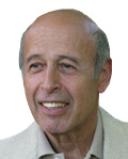Altruism
Our Power as Active Bystanders
Acting to prevent suffering and creating a better world.
Posted January 27, 2012
Each of us has great potential power to help others in need, to influence fellow witnesses when action is needed, to become active bystanders. We have the potential, if we join together, to influence organizations and our country to prevent harm to people at home and abroad. I see a bystander as a witness who has the potential to know what is happening and the potential to take positive action. I say the potential to know, because to avoid involvement people often close their eyes to events.
Many years ago I conducted at study on the streets of Cambridge, Massachusetts. Working with a few of my students at Harvard, one at a time would collapse on the street, either grabbing his knee or his heart, either on the same of the street as an approaching passer by or on the other side. We encountered an unexpected phenomenon. Some people walking by on the other side after a single look rushed over to help. Others hesitated about what to do. But some people after a single glance looked away, never looked back, and some even turned off the street at the next corner. Individuals, organizations, governments at times also close their eyes to people's need.
Research that began after Kitty Genovese was repeatedly attacked and then killed on the street in New York, which people in neighboring buildings witnessed, showed that the larger the number of witnesses/bystanders, the less likely that any one person takes action. Also, the passivity of some bystanders makes passivity by others more likely.
But people can also exert positive influence on each other. In one of my studies when two young children, kindergarteners or first graders, heard sounds of distress from another room, they began to talk to each other about it, and were likely to talk themselves into taking action. In another study with adults I had a "confederate" and the actual participant in the study sit together in a room, working separately on their tasks. When there was a crash and sounds of distress from another room, what the confederate said greatly influenced what the other person did. When this person said 'I don't think this has anything to do with us. Perhaps it is another experiment' only about 25 percent of the participants attempted to help. When the confederate said 'This sounds bad. I go and find the person in charge; you go in and see what happened' and left the room through another door, every single time the other person went into the room from which the sounds came. By what they say, in this case "defining" the meaning of an event and the appropriate action, bystanders can recruit others to be their allies in taking action.
Sometimes active bystandership requires moral courage, acting on one's values and beliefs in spite of potential and even likely negative consequences. There are powerful examples of such actions by single individuals. One of them was Joe Darby, who put a disk with photos from Abu Ghraib under the door of a superior, and later came forward as the person who did that. Heroic rescuers during genocides act with both great moral and physical courage: rescuers of Jews during the Holocaust, of Armenians in Turkey during the genocide there, Hutus saving Tutsis in Rwanda.
Nations can also be passive or active bystanders. In spite of information about impending violence, the international community did nothing before the genocide in Rwanda in 1994, and remained passive during it, even as the media reported the atrocities, with pictures of many bodies floating down a river reddened by blood. Many countries' soldiers went in, gathered their citizens, and left, thereby telling the killers that they won't interfere. The U.N. removed most of its peacekeepers. The historically common response of passivity by nations as other governments do terrible things to their citizens is beginning to change, but very slowly. The response is still often no response--passivity. The international community took years to respond to the violence in Bosnia, and has been doing nothing in response to current violence in the Nuba Mountain region in Sudan.
But we must learn about possibilities of action from the rare occasions when there was action. Students and many other people demonstrated against apartheid in South Africa and against corporations doing business there. As more and more corporations then boycotted South Africa, the business community there, concerned about the impact on the economy, pressured the government to change policies. The concentrated action of varied parties, who joined black South Africans acting in their own behalf, brought an end to apartheid.
Each of us can be active bystanders. Teachers and students in schools can stop harassment and intimidation by students of other students. To help students do so, the staff of Quabbin Mediation of Orange, MA. and I have developed a program for Training Active Bystanders, which in its first application reduced harmful conduct of students by 20 per cent, in comparison to control schools. Students learn in this program what inhibits witnesses from acting, to turn to each other and join together, to support fellow students who are targets of harmful action, and to stop harmdoing as non-confrontationally as possible. Churches, Rotary clubs, all civic groups can mobilize their members to help people, to create non-violent, harmonious communities at home, and to influence organizations and the government to be positive bystanders abroad.
Ervin Staub's latest book is Overcoming Evil: Genocide, violent conflict and terrorism (2011). Other material especially relevant to this blog is his book The psychology of good and evil: why children, adults and groups help and harm others, and the book chapter "The roots of goodness: The fulfillment of basic human needs and the development of caring, helping and nonaggression, inclusive caring, moral courage, active bystandership, and altruism born of suffering," which can be found at www.ervinstaub.com under downloads.


